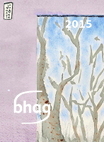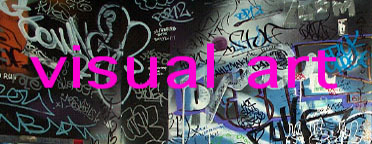 art and writing creative exchange reviews word
art and writing creative exchange reviews word
publish write a review create a group links contact
bhag.net online magazine of visual and conceptual exchange
John Clay visual art
Click on image to enlarge.
paintings
Rockwire assemblages
biography

John Clay is an artist, writer, editor, and web designer. After formal training in anthropology at Notre Dame University and in music composition at New England Conservatory and Washington State University, he began pursuing visual art, philosophy, and political economy. Theory, design, application, and the common good are the constants among these pursuits.
His art has shown at Chashama in New York City, Georgian Court University Library in New Jersey, Out of the Blue Studio in Cambridge, Massachusetts, LoLa Art Crawl in Minneapolis, Saint Paul Art Crawl in Saint Paul, Minnesota, Vasaloppet Art Show in Mora, Minnesota, and at cafes and open studios in New York City, Boston, Minneapolis, and Saint Paul.
John is founder and webmaster of bhag.net, democraticpromise.org, and riverhousearts.net. He has worked as a policy director for Jobs Now Coalition in St. Paul, Minn. and as a labor market analyst and web designer for the State of Minnesota. He is co-owner of River House Arts LLC is a labor union member.
His writing on democracy and the economy has been published nationally in Truthout and Science & Society, as well as in Workday Minnesota, Minnesota Employment Review, Minnesota 2020, St. Paul Villager, Duluth News Tribune, and Detroit Lakes Online. He was the featured speaker on union cooperatives at the Saarland Labor Chamber in Saarbrücken, Germany in 2014. His interview with artist Chuck Close is published online at Artzar.com and here at bhag.net.
artist statement
I see each work of art as a ground for contemplation. I combine abstract or representational elements in an image which is, I hope, at once strongly assertive and ultimately indecipherable. No question can be the last or only question. No answer can be the last or only answer. This interpretive infinality is true of any sensory event we encounter. But it is all the more evident in a sensory event whose significance is all the less established in convention. Where the significance of a sensory event is well-established—as when encountering a stop sign at an intersection—the conventional question and answer as to what we see is so evident that the interpretive process is begun and finished all at once. However, where the significance is not well-established—as when encountering an unfamiliar image on canvas—the interpretive process is prolonged. The mind is focused on the interpretive task; it does not wander. The task is ongoing; its outcome remains an open issue. The mind stands in a state of poise and readiness. This is the state which Chinese Zen (chanzong) calls huatou, which can be translated as "the head, or leading thread, of discourse". It is the moment of cognitive animation before speech, the moment of open senses and spontaneous neural networking, the flurry of action which is concerted and focused but whose outcome is still indeterminate, still an open issue. Chanzong holds that this state of poised animation readies us for enlightenment. I hold that it readies us for life.
To inquire about the artist's work, please contact john@riverhousearts.net.


